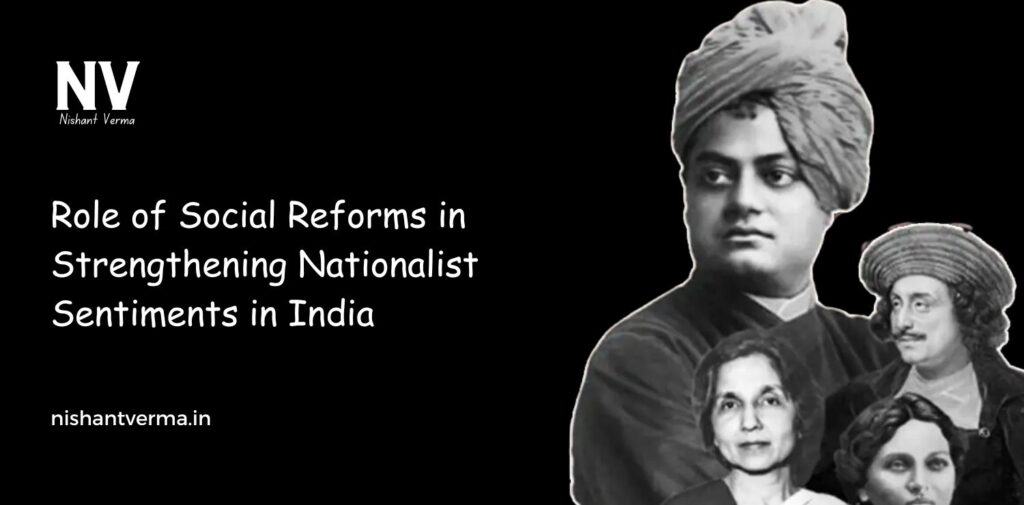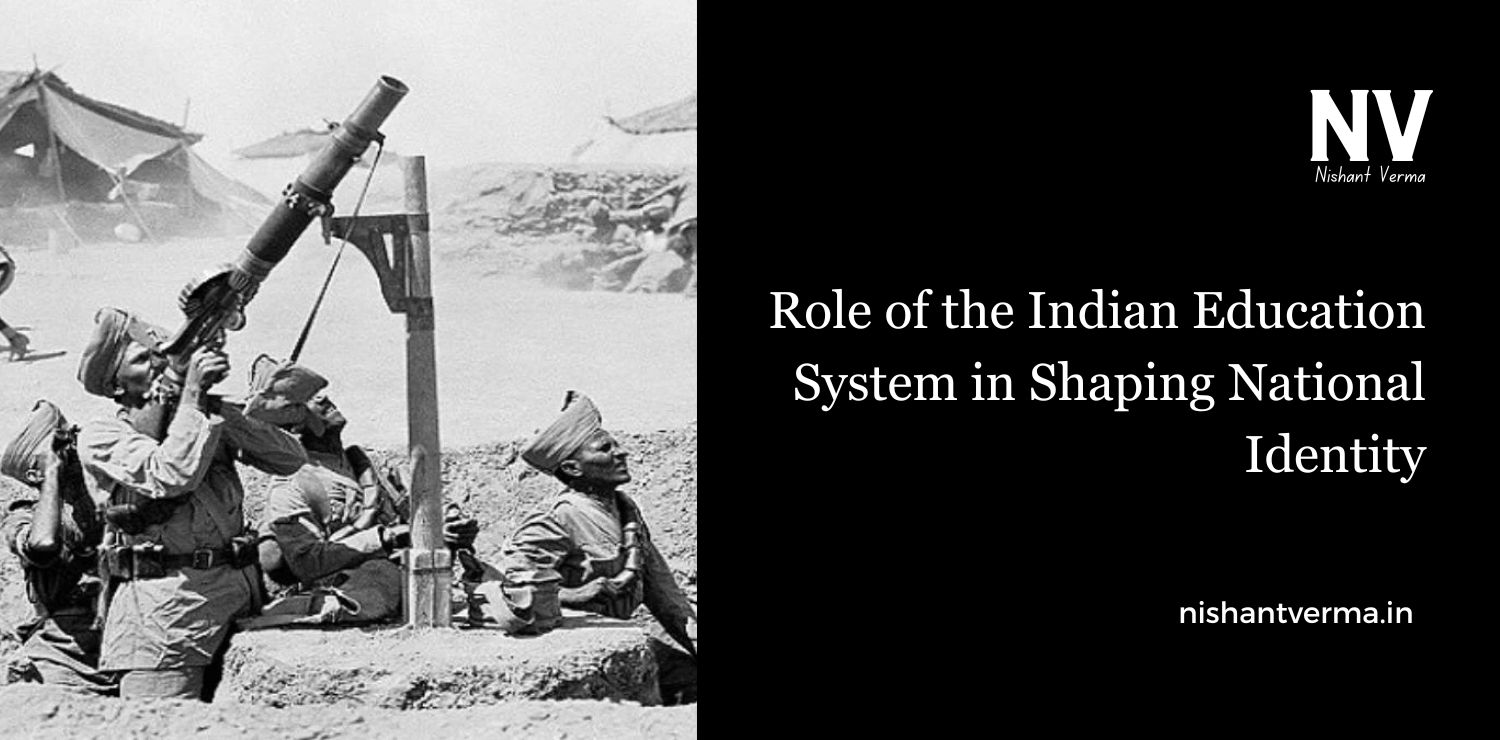India’s journey to independence wasn’t just about fighting against British rule; it was also about fighting for a better society. Social reforms played a huge role in shaping the mindset of people, and many of these reforms helped in strengthening nationalist sentiments. Let’s understand how social reforms were linked to the Indian freedom struggle, and how they helped in uniting the country for the cause of independence.
What Were Social Reforms?
Social reforms were changes made in the society to remove the unfair practices and traditions that had held people back for centuries. These changes aimed at improving the lives of people, especially those who were treated unfairly, like the lower castes, women, and the poor. The main goal was to create a society that was just, equal, and full of opportunities for everyone.
In the late 19th and early 20th centuries, India was under British rule. The British were not only controlling the country, but they were also promoting certain ideas that kept India divided. Social reformers started working to change these old practices, such as child marriage, the mistreatment of women, and untouchability. These changes in society helped people unite and think about their freedom from British rule.
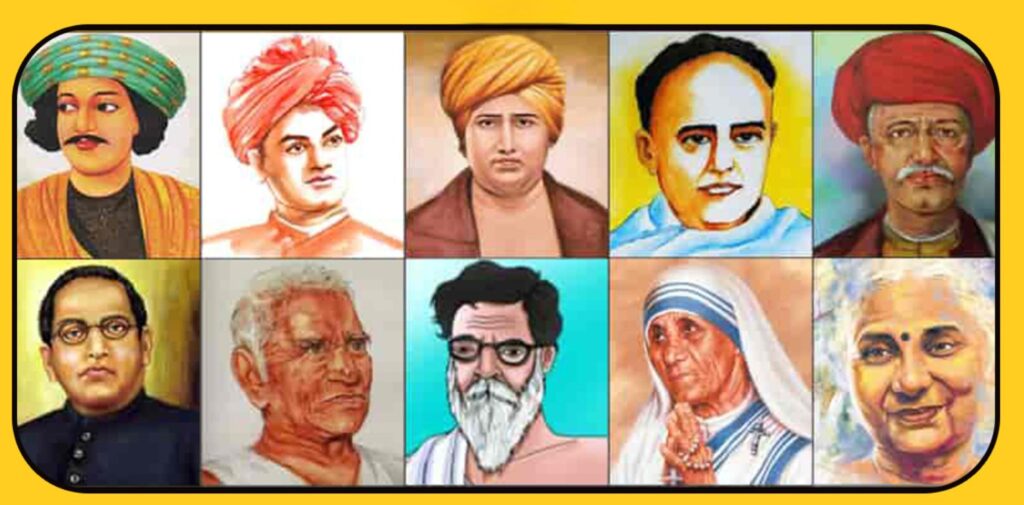
Social Reforms and Nationalism
Nationalism is the feeling of pride in one’s country and the desire for freedom and independence. Social reforms helped build this spirit of nationalism in India. They did this in several ways:
Uniting People Across Castes and Regions
India was divided into many castes and regions, each with its own customs and traditions. Social reformers like Jyotirao Phule, Dr. B.R. Ambedkar, and Swami Vivekananda worked hard to bring these groups together. They spoke against the caste system, which divided people into groups based on their birth, and instead promoted the idea that all people are equal.
When people from different backgrounds began to understand that they should not be separated by caste or region, they started to come together for a common cause – the fight for independence. This unity became an important part of the nationalist movement.
Empowering Women
In traditional Indian society, women were often treated as second-class citizens. They didn’t have many rights and were often not allowed to participate in social or political matters. Social reformers like Raja Ram Mohan Roy, Ishwar Chandra Vidyasagar, and Sarojini Naidu fought to improve the status of women. They supported women’s education, opposed child marriage, and worked for women’s right to property.
As women started to get educated and were given more rights, they became active participants in the freedom movement. Their involvement in the nationalist struggle helped to push the fight for independence forward. Many women leaders like Kasturba Gandhi, Laxmi Bai, and Begum Hazrat Mahal played crucial roles in the movement.
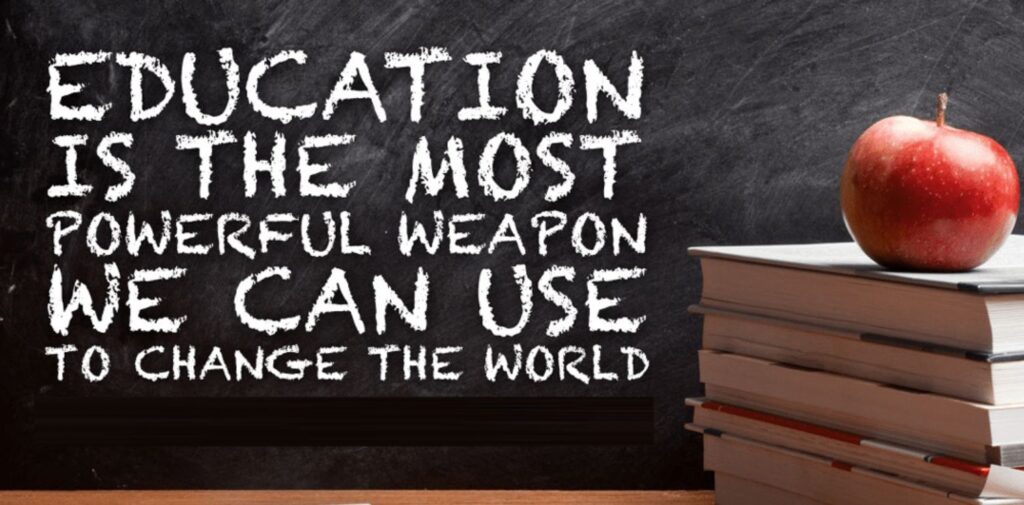
Promoting Education and Awareness
Education was a key part of social reform. Reformers believed that an educated society would be more aware of its rights and would be better prepared to fight for independence. Schools and colleges began to open up across India, and more people were encouraged to learn. This helped in spreading nationalist ideas.
Swami Vivekananda, for example, emphasized the importance of education in building a strong and proud nation. He wanted to see Indian society progress, but he also believed that it was important to preserve Indian culture and values. By promoting education, social reformers helped people become more conscious of their identity as Indians and encouraged them to fight for their freedom.
Challenging British Rule Through Social Changes
The British used the divide-and-rule policy to maintain control over India. They encouraged social divisions, like the caste system, to keep people apart and prevent them from uniting against British rule. Social reformers worked to break these divisions and create a sense of unity. As people from different sections of society came together, they became stronger in their fight against British oppression.
For example, the fight against untouchability, led by leaders like Dr. B.R. Ambedkar and Mahatma Gandhi, became an important part of the nationalist movement. Gandhi’s idea of “Sarvodaya” (the welfare of all) and his campaigns for the removal of untouchability inspired millions of Indians to join the freedom struggle.
Cultural and Religious Reforms
Many social reformers also tried to change the way people thought about religion and culture. In India, there were many different religions and beliefs, and the British often took advantage of these differences to create divisions. Reformers like Swami Vivekananda and Dayananda Saraswati worked to bring people together by focusing on the core spiritual and ethical teachings of Hinduism, and they believed in religious tolerance and unity.
This focus on unity helped to promote a sense of nationalism that went beyond religious boundaries. It reminded people that they were all Indians, and this feeling of national pride helped to strengthen the fight for independence.
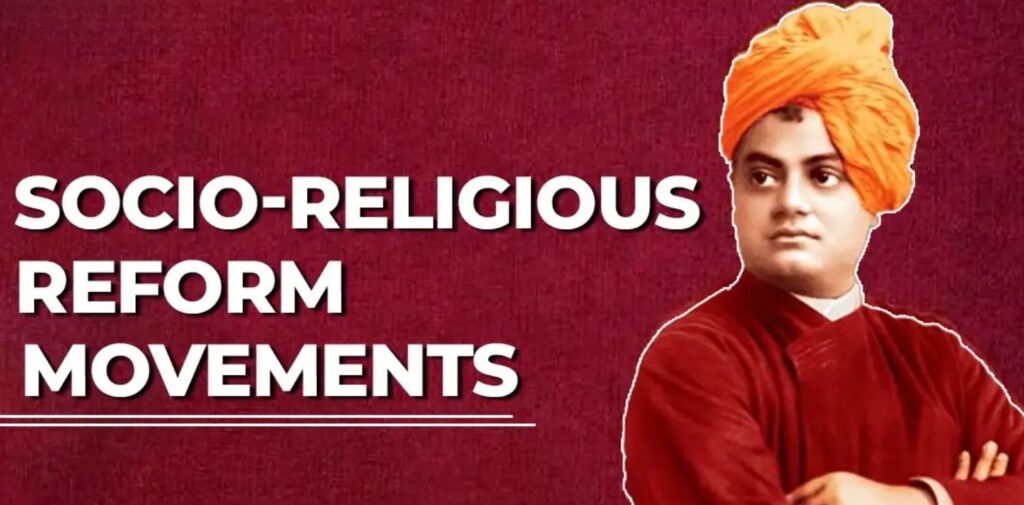
The Impact of Social Reform Movements on the Freedom Struggle
The social reform movements in India played an important role in the overall struggle for independence. Here are a few ways in which they contributed to the freedom movement:
- Creating a National Consciousness: Social reform movements helped people understand their rights and the need for social justice. Reformers spoke about the need for equality, justice, and freedom, which were also the main goals of the nationalist movement. When people understood these values, they became more willing to join the fight against British rule.
- Strengthening Unity and National Identity: The fight for social justice helped create a sense of unity among Indians. When people from different regions, castes, and religions came together to fight for social reforms, they also came together to fight against British rule. This unity was crucial in the nationalist struggle.
- Inspiring Leaders of the Nationalist Movement: Many of the leaders of the nationalist movement were inspired by the work of social reformers. Leaders like Mahatma Gandhi, Jawaharlal Nehru, and Sardar Patel supported social reforms and believed that the independence movement should be inclusive of all sections of society.
- Building Confidence and Hope for the Future: Social reforms gave people hope that India could become a better place, not just free from British rule, but also free from the social inequalities that had existed for centuries. This hope gave people the courage to participate in the freedom struggle and work for a better future.
Conclusion – Role of Social Reforms
Social reforms in India played a huge role in strengthening the nationalist sentiments that eventually led to India’s independence. By fighting against unfair practices, promoting education, and uniting people from all walks of life, social reformers helped create a society where people believed in equality, justice, and freedom. These changes were not only important for the social development of India but also for the success of the freedom movement. The social reform movements and the nationalist struggle went hand in hand, and together, they helped shape the India we know today.
So, while we remember the leaders of the freedom struggle, we must also acknowledge the important role that social reformers played in shaping India’s path to independence. Their work laid the foundation for a united, just, and free nation.

